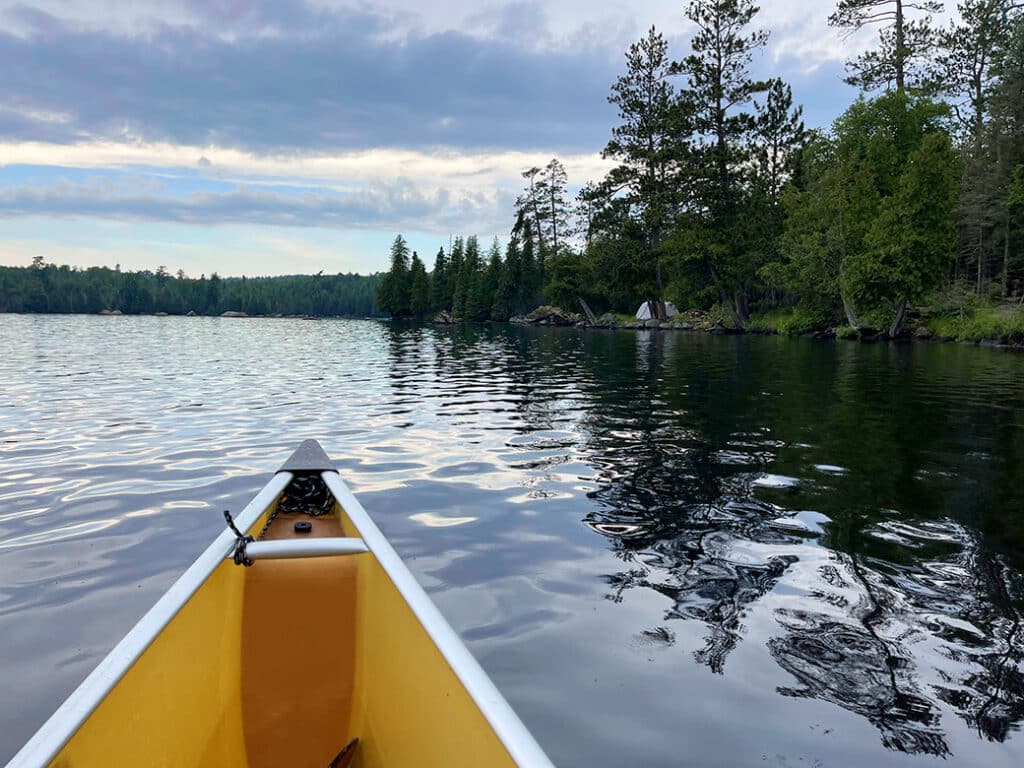
A large splash startled me as we floated across the glass-like water on a recent canoe camping trip in the Superior National Forest. I looked up in the direction where the sound originated, expecting to see ripples where a fish broke the surface of the water. But what I saw was even better. “There’s a moose,” I whispered to my husband, pointing toward the young bull who just emerged from the dense forest. We sat and watched as he swam in front of our canoe toward the other side of the lake, barely noticing our presence before he disappeared back into the forest.
When it comes to canoe camping in Minnesota, the Boundary Waters Canoe Area Wilderness (BWCAW) gets most of the attention, and for good reason. But just outside of the wilderness borders is one of Minnesota’s best-kept secrets.
You won’t see these campsites on Instagram. And specific information can be sparse. But if you’re willing to do a little bit of research and venture off the beaten path, you’ll be delighted with some of the best canoe camping Minnesota has to offer.
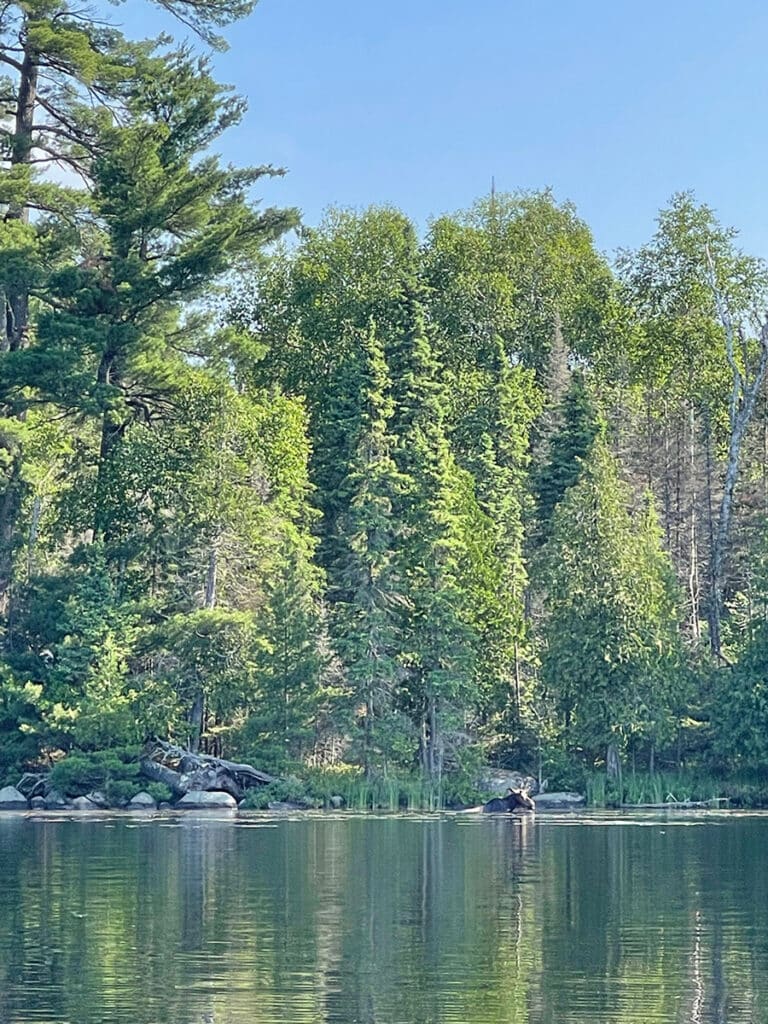
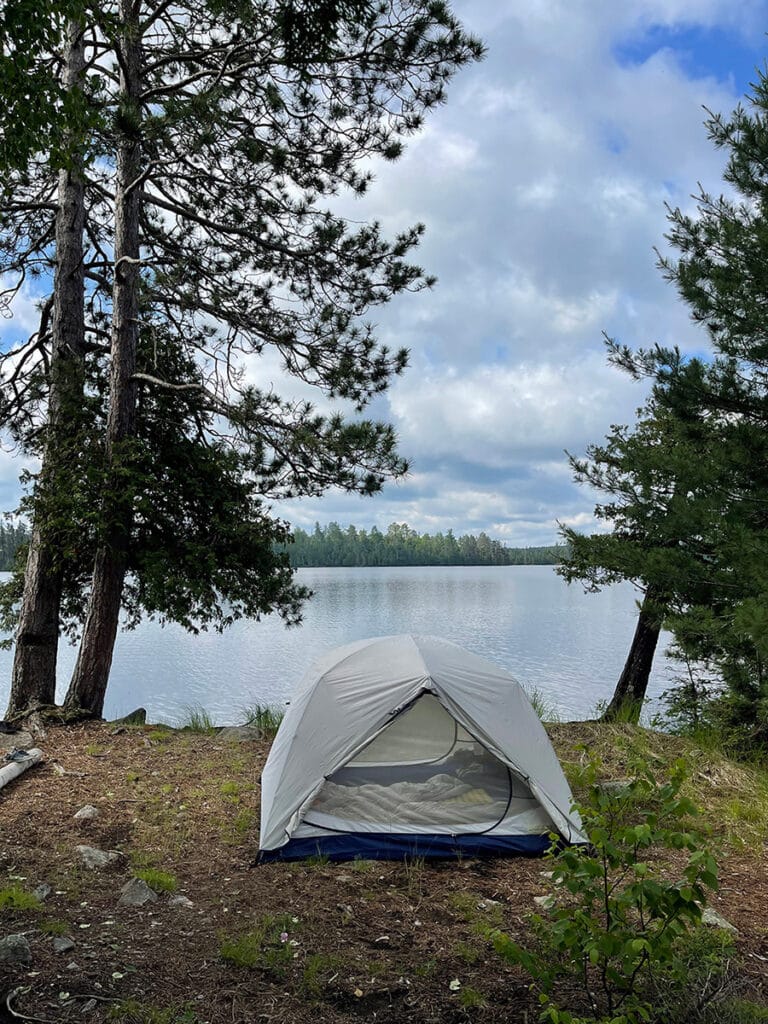
Planning your Superior National Forest canoe trip
At three million acres—which includes the one-million-acre BWCAW—you could spend a lifetime exploring the Superior National Forest and never see it all. Before we started planning this canoe trip, we had a long list of places we hope to someday explore via path or paddle. And after one morning of researching just one of the five districts, that list is remarkably longer.
I wrote about campground camping in the Superior National Forest in a two-part series you can read here. These are the places where we fell in love with camping and the largest national forest east of the Mississippi River. But there’s so much more to this recreational wonderland. In addition to 23 fee campgrounds, there are more than 250 backcountry campsites dispersed throughout the forest—all offering a unique experience.
We began planning this trip by setting some goals. We knew we wanted to canoe and fish. We were also hoping to find quiet and solitude. Before we started digging through the Forest Service’s website we made a list of what we were looking for. We were hoping to find a lake with only one campsite, carry-in access, no cabins or private property, and good fishing—not to be too picky or anything.
The forest service has downloadable reference guides for each district’s backcountry campsites that you can find here. This is where we started our search, downloading the three districts we preferred, and quickly narrowing down our options. From there we used the links below the reference guides to learn more about the locations that piqued our interest. My husband next went to the Minnesota DNR’s Lake Finder website and read the Fisheries Lake Survey for each of the lakes we were considering. We then ranked our top three choices, having a backup plan to our backup plan if our first choice was already taken when we arrived.
Planning pro tip
While we were researching this Superior National Forest canoe trip, I created detailed notes in my preferred note app so all of this information will be easy to reference when we plan our next trip. It’s a little bit of work to make sense of these 250+ campsites. But it’s well worth the effort. And if you take one extra step in the beginning, you’ll have easy-to-access information for years to come.
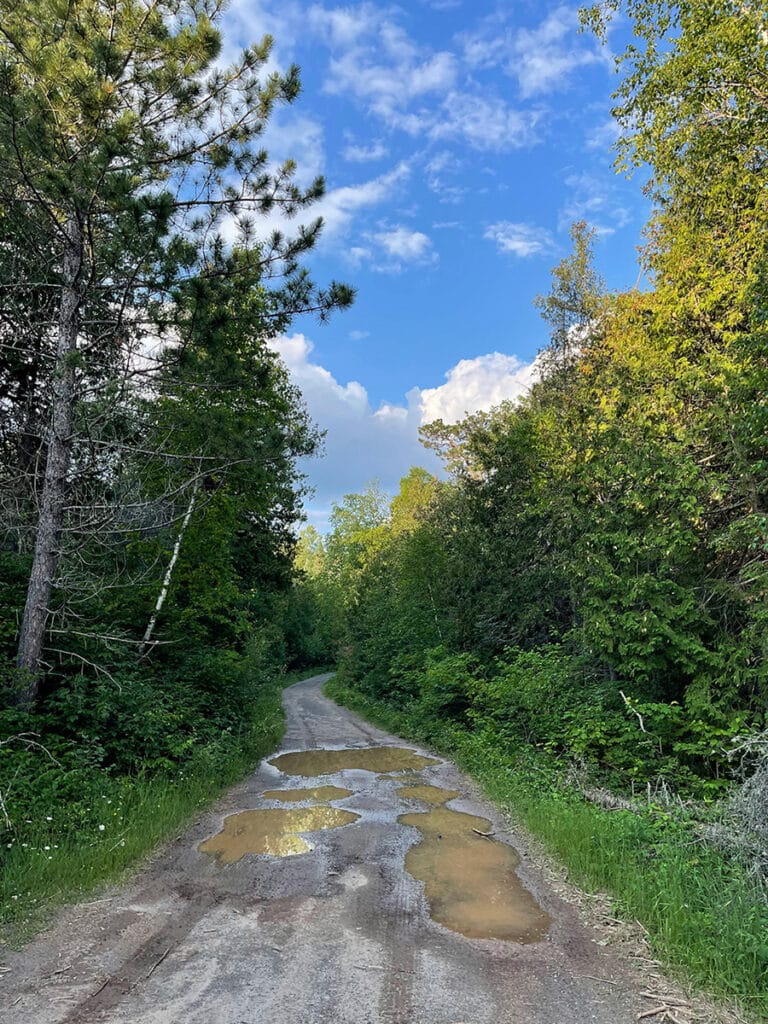
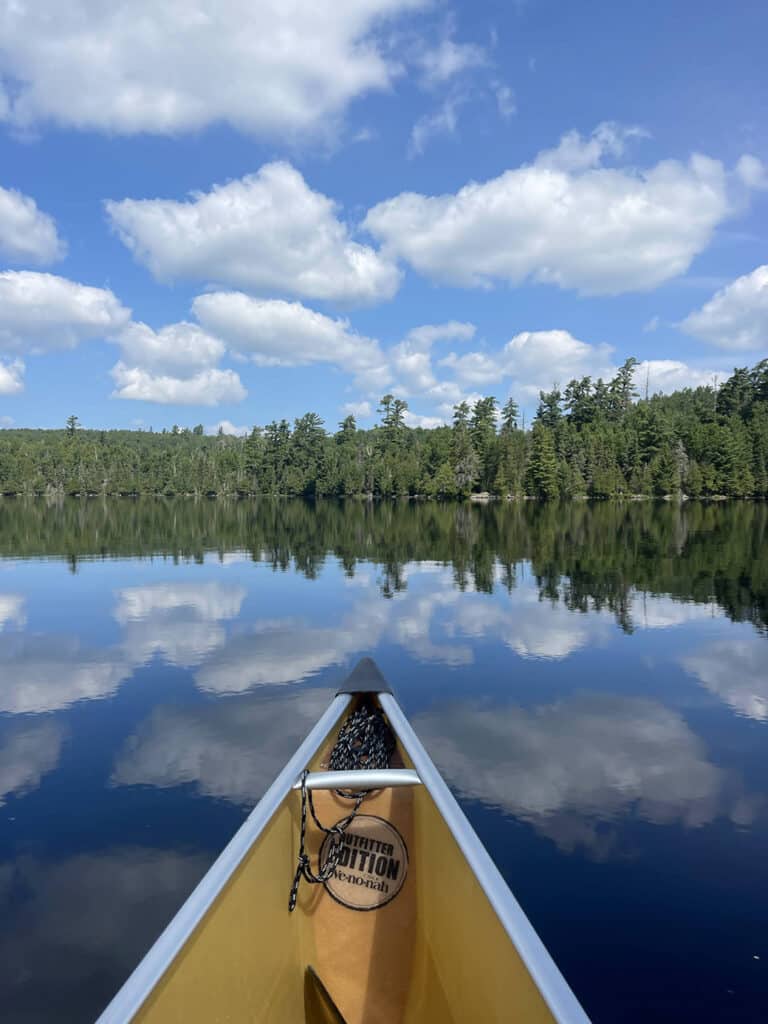
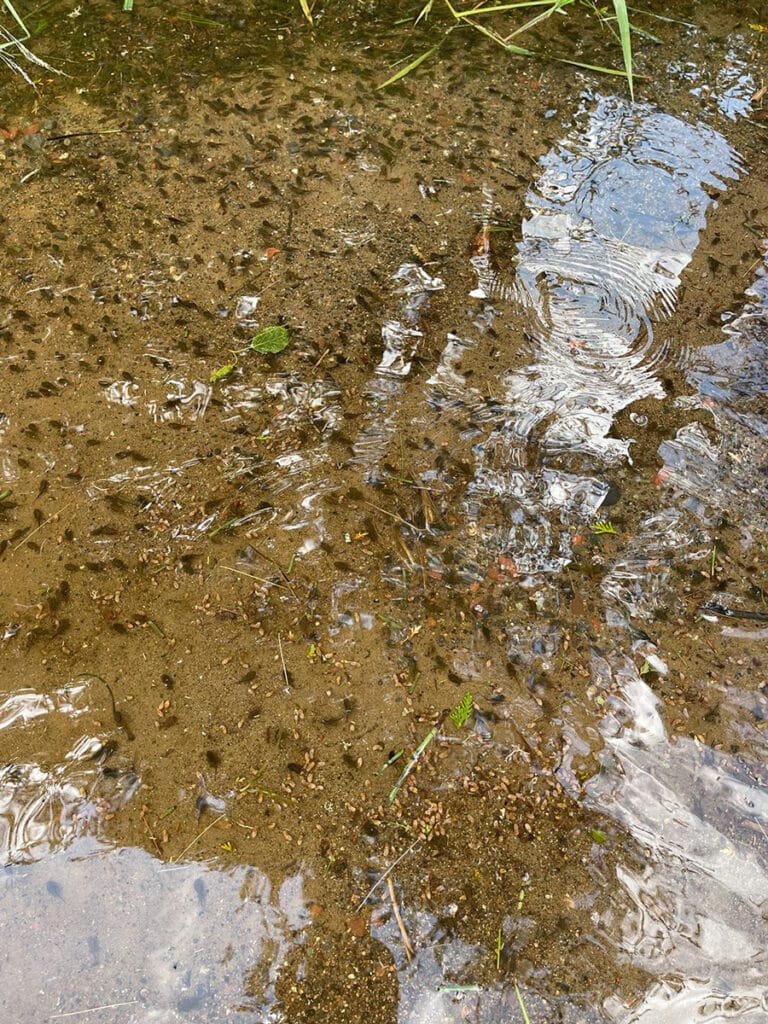
Exciting start to our canoe trip
“Well, I don’t think we have to worry about the campsite being taken,” my husband said as he hopped out of the truck to move a small fir tree that had fallen across the single-lane forest road. I’ve spent countless nights in first-come-first-served campsites and have never had an issue finding a place to stay. Still, I worry about this because there’s no guarantee—especially if you’re showing up after seven pm on the Friday of a holiday weekend. With the long northern mid-summer days and backup plans in place, we knew we’d be okay, but we were hoping to get lucky and grab our first choice.
There wasn’t a soul in sight as we pulled into the remote boat landing. As we exited the vehicle and started unloading the canoe, we noticed the ground was moving. We took a closer look and found thousands of tiny frogs who’d just transitioned from the thousands of tadpoles that filled the shallow water where we launched our canoe.
We had a hard time finding information on the lake we chose and had no idea where the campsite was. Before we left home, I used the satellite view in Google Maps and marked anything that appeared to be a campsite. I have the entire region saved for offline use in the app on my phone so the information is accessible even if I don’t have a signal. We paddled toward the closest option and at first sight, it didn’t appear to be too inviting. We hopped out of the canoe to search for the USFS fire grate and latrine that are the mark of each backcountry campsite. It took a bit of searching but we found the latrine and I’m certain we were the first people to use that campsite this year. We unloaded the canoe and set up our home away from home for the next four glorious nights.
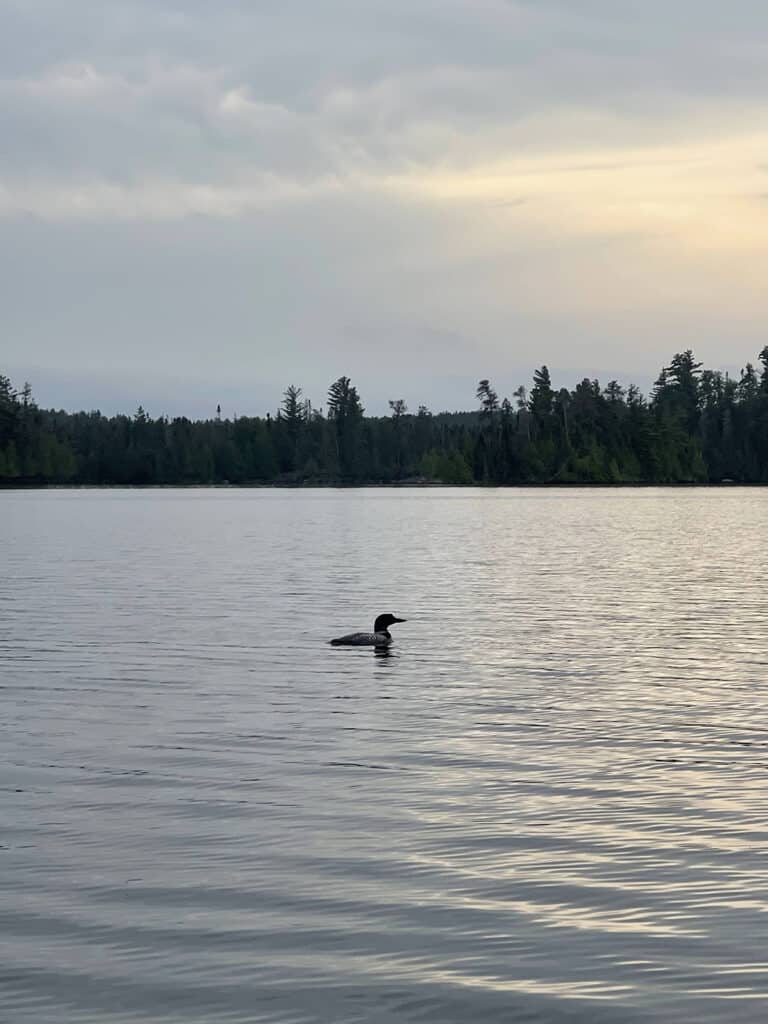
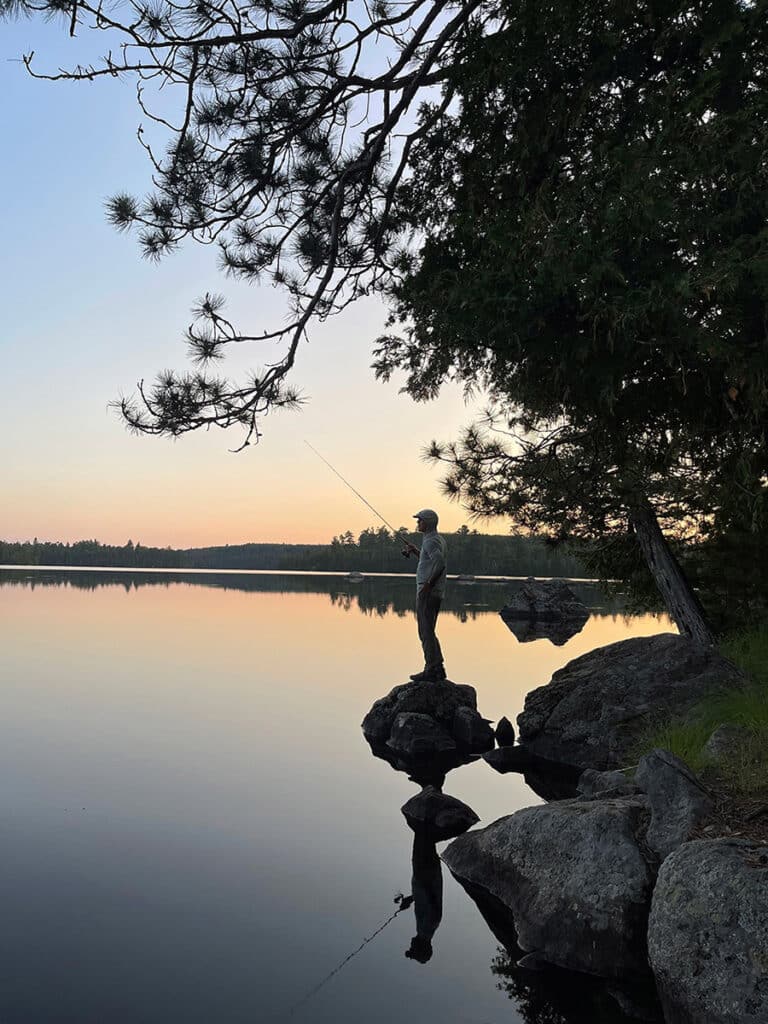
What you need to know about canoe camping in the Superior National Forest
If you’ve canoe camped in the BWCAW, you’ll find the Superior National Forest to be very similar. The big difference is that there are no required permits or fees. Like the BWCAW, these single sites have a fire grate and latrine. And some have picnic tables. The group size is limited to nine and all garbage must be packed out. All sites are first-come-first-served and there is a 14-day stay limit throughout the forest.
While there are fewer regulations, the BWCAW best practices make sense in these backcountry campsites. Always practice the seven principles of Leave No Trace, use bear-proof containers or hang your food pack, be aware of campfire restrictions, and drown your fire with water before going to bed or leaving camp. You will need to treat or boil drinking water, wash yourself and dishes at least 200 feet—which my husband pointed out is nearly 12 canoe lengths—from water sources. Clean fish away from the campsite and bury the remains the same 200 feet inland. Finally, always pack out all of your trash and anything else you find in camp.
Some of the more than 250 backcountry sites are part of canoe routes. These are beautiful areas to paddle and portage and make great practice trips before longer treks in the BWCA Wilderness. You can learn more about the 13 canoe routes here.
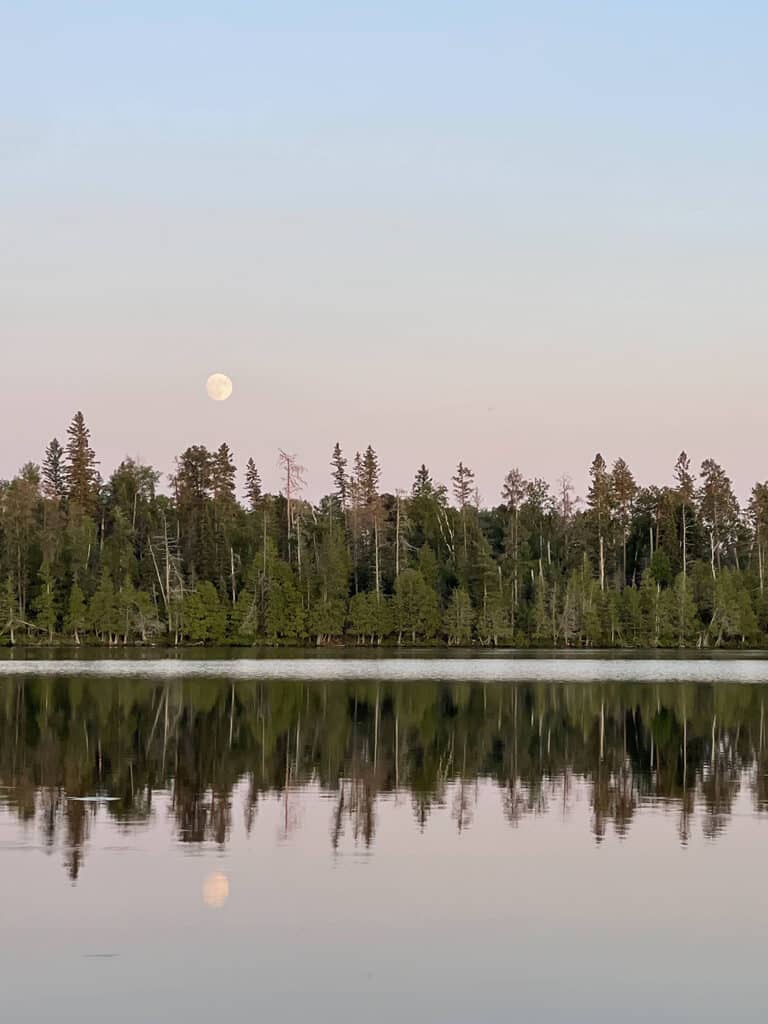

The end of a perfect canoe trip
“Would you come back here?” my husband asked as we were packing up on the last day of our trip. “In a heartbeat,” I answered. “But there are so many other places I want to explore,” I continued. This short 5-day canoe camping trip in the Superior National Forest far exceeded our expectations. In addition to the moose and frogs, we spent hours watching a family of loons fish in front of our campsite. We had an owl, whippoorwill, and hummingbird visit us. And the weather was as close to perfect as it could get. The fishing was fun and productive and the only downside was the bugs. But that’s just part of Minnesota summers.
The next time you’re planning a canoe camping trip, check out what the Superior National Forest has to offer. With no permits or user fees, it’s easier to access than Boundary Waters Wilderness and equally as spectacular. Whether you’re looking for great fishing, paddling and portaging practice, or just a long weekend of relaxation, you’re sure to find a location that exceeds your expectations.
Additional resources:
Backcountry campsites
Canoe routes outside the BWCA
Outdoor safety and ethics in Superior National Forest
Minnesota DNR LakeFinder
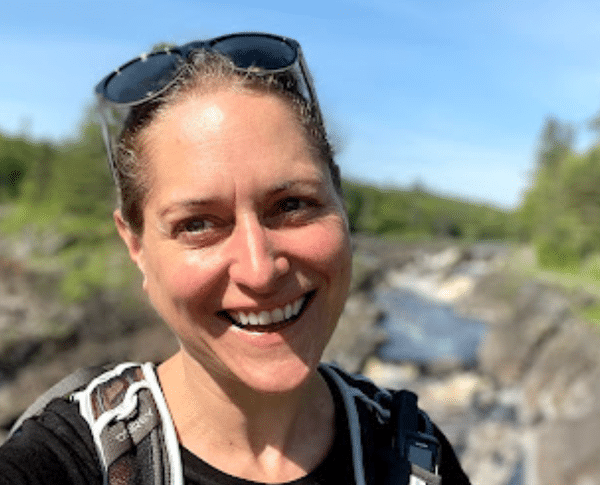
Holly Scherer is a Minnesota-based writer, photographer, outdoorswoman, and guide. She’s most at home in the great outdoors; camping, hiking, paddling, cycling, and gardening. When she’s not on an adventure, she and her husband live in the Twin Cities where they’re fond of saying, “home is where we store our outdoor gear.”

